|
|
|
|
|
|
|
|
Photo Gallery for Eurycea cirrigera - Southern Two-lined Salamander
| 31 photos are available. Only the most recent 30 are shown.
|
 | Recorded by: Steven Joyner & Michael P. Morales
Cumberland Co. |  | Recorded by: Steven Joyner & Michael P. Morales
Cumberland Co. |
 | Recorded by: Steven Joyner & Michael P. Morales
Cumberland Co. |  | Recorded by: B. Bockhahn, T. Abee
Rockingham Co. |
 | Recorded by: B. Bockhahn, T. Abee
Rockingham Co. |  | Recorded by: Stephanie Willis
Guilford Co. |
 | Recorded by: Stephanie Willis
Guilford Co. |  | Recorded by: Stephanie Willis
Guilford Co. |
 | Recorded by: Stephanie Willis
Guilford Co. |  | Recorded by: Stephanie Willis
Guilford Co. |
 | Recorded by: Stephanie Willis
Guilford Co. |  | Recorded by: Stephanie Willis
Guilford Co. |
 | Recorded by: Stephanie Willis
Guilford Co. |  | Recorded by: Stephanie Willis
Guilford Co. |
 | Recorded by: Stephanie Willis
Guilford Co. |  | Recorded by: Stephanie Willis
Guilford Co. |
 | Recorded by: Stephanie Willis
Guilford Co. |  | Recorded by: Stephanie Willis
Guilford Co. |
 | Recorded by: Stephanie Willis
Guilford Co. |  | Recorded by: Stephanie Willis
Guilford Co. |
 | Recorded by: Steve Hall, Bruce Sorrie, Scott Pohlman, Mary Conlin, and Paul Camp
Chatham Co. |  | Recorded by: David George, Jeff Niznik
Chatham Co. |
 | Recorded by: Paul Hart
Harnett Co. |  | Recorded by: A. Kauppila
Burke Co. |
 | Recorded by: L. Knepp
Surry Co. |  | Recorded by: Rob Van Epps
Mecklenburg Co. |
 | Recorded by: L. Osteen
Orange Co. |  | Recorded by: Steve Hall
Orange Co.
Comment: A mature larvae that is beginning to metamorphose. |
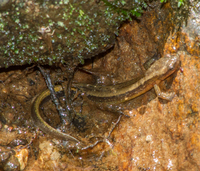 | Recorded by: Steve Hall and Harry LeGrand
Granville Co. |  | Recorded by: Steve Hall
Halifax Co. |
|

 »
»




 »
»


